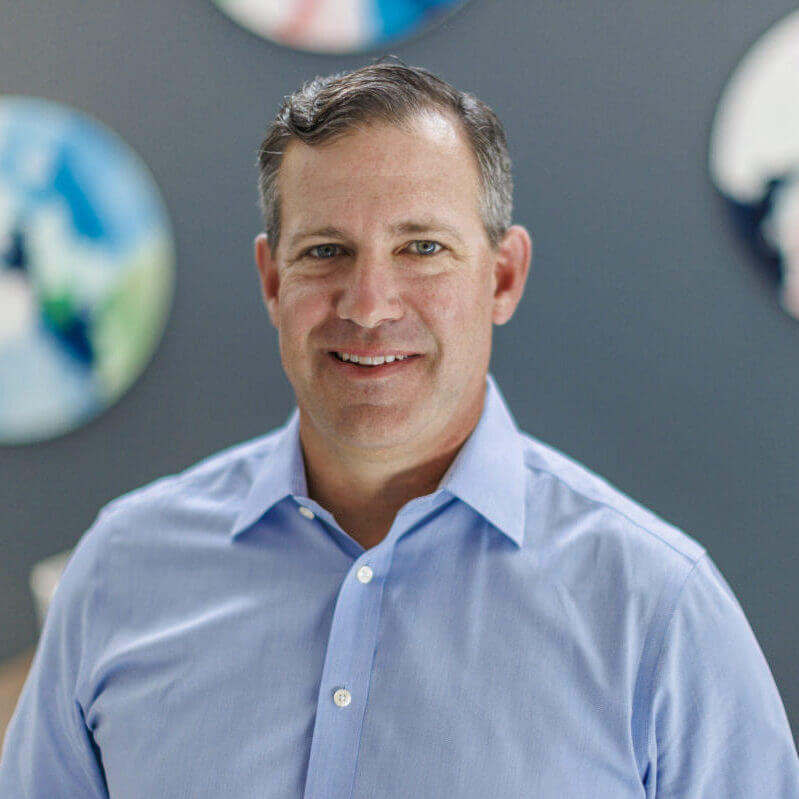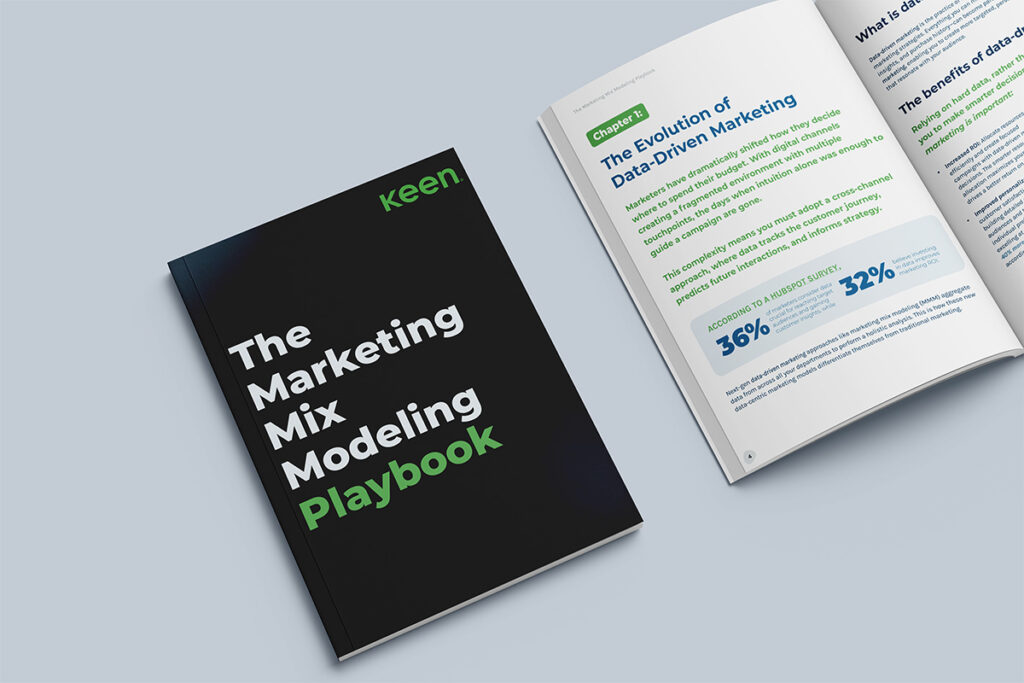Marketing leaders today face a challenge that would have seemed impossible just a few years ago. They must simultaneously optimize for long-term brand building and immediate performance while navigating a media landscape that can shift overnight. The traditional approach of setting annual strategies and quarterly optimizations simply cannot keep pace with the volatility of modern digital marketing.
In this conversation, Greg Dolan (CEO & Co-founder of Keen) and Rachel Tipograph (founder and CEO of MikMak) explore how leading brands are solving this challenge through integrated platforms that enable both strategic full-funnel planning and real-time tactical optimization. Their discussion reveals why the future belongs to organizations that can seamlessly blend long-term vision with immediate responsiveness.
Key Takeaways
- Modern marketing requires real-time optimization capabilities because media platforms and market conditions can change overnight, making traditional quarterly planning cycles insufficient.
- Brands should invest 60-70% of their marketing budget in upper-funnel brand building activities rather than focusing primarily on bottom-funnel performance marketing that becomes increasingly expensive without brand support.
- Marketing organizations need to break down silos between marketing, finance, and operations teams to make faster, more informed decisions about budget allocation and strategy.
- Technology partnerships between different marketing platforms create more value than individual tools because integrated data and workflows enable both strategic planning and tactical execution.
- Companies that adopt integrated marketing approaches early are gaining competitive advantages while traditional measurement and optimization methods become less effective in today’s privacy-focused environment.
When Apple Changed Everything: The End of Deterministic Attribution
Rachel begins the conversation by tracing the evolution of marketing measurement over the past decade. The comfortable era she describes as the “social media era” was built on the backbone of Facebook ads and Shopify, where brands enjoyed the luxury of one-to-one attribution.
“We were living in a time of deterministic attribution,” Rachel explains, reflecting on MikMak’s ten-year journey serving over 2,000 of the world’s biggest brands. This era of certainty created a false sense of security that would soon be shattered by two major disruptions.
The first came from evolving data privacy regulations like GDPR and CCPA starting in 2016. But the more devastating blow came from an unexpected source. “Apple woke up one day and realized that companies like Alphabet and Meta were building billion dollar advertising businesses in their hardware, and they weren’t seeing a cent,” Rachel notes.
This realization led to Apple’s iOS changes around 2019-2020, fundamentally altering how data is collected and shared. The impact created what Rachel calls “the rise of retail media,” as retailers with first-party data became the new kingmakers in digital advertising.
The TikTok Wake-Up Call: Why Real-Time Matters
The volatility of today’s media landscape became starkly apparent in early 2025 during the TikTok uncertainty. Rachel shares how MikMak’s real-time data revealed the dramatic impact: “Around January nineteenth, MikMak saw brand TikTok traffic go to zero.”
The platform had been MikMak’s second-largest channel after Meta, making this a significant disruption for brands. But the real insight came from seeing how quickly brands adapted. “Where did brands reallocate those dollars? They actually reallocated those dollars to Alphabet,” Rachel explains, because YouTube offered the combination of upper-funnel video content and bottom-funnel search capabilities.
Traffic eventually returned to near-normal 2024 levels, but the episode demonstrated why static media planning approaches are no longer viable. “Media is real time, and the things that are happening in the industry are changing overnight,” Rachel emphasizes.
The Full-Funnel Investment Problem Most Brands Face
Greg brings 25 years of experience in marketing attribution to highlight a critical issue facing most brands today. Despite knowing better, the pressure for immediate results has created a dangerous imbalance in funnel investment.
“Everything moves to the bottom of the funnel, and it becomes more and more expensive to get the same amount of volume,” Greg observes. The data suggests optimal performance requires a 60-40 or 70-30 split favoring upper-funnel investment, yet most brands are doing exactly the opposite.
This creates a vicious cycle where bottom-funnel tactics become increasingly expensive as they lack the support of strong brand awareness built through upper-funnel activities. Greg emphasizes that when you run a Meta ad, “it’s going to have a long term impact. It’s gonna have an impact on other channels,” but traditional measurement approaches fail to capture these interaction effects.
The challenge becomes even more complex when brands face pressure from retailers to increase retail media network spending, even as volume sales decline. Rachel describes how “their media plans are handcuffed because they have pressures from retailers to increase spend. Yet if you look at their earnings, volume sales are down.”
Rachel reinforces the importance of long-term thinking by pointing to enduring brands: “Just look at some of the world’s oldest, most relevant brands. P&G, Coca-Cola, Nike. Brands that stand the test of time invest in brand. They invest in upper funnel media.”
How Strategic Partnerships Bridge Strategy and Execution
The partnership between Keen and MikMak represents a new paradigm in marketing technology, one that bridges the gap between strategic planning and tactical execution. While Keen provides the holistic, cross-channel view that helps marketers understand the full impact of their investments, MikMak delivers the real-time optimization capabilities that allow for immediate course corrections.
“The big step change is that MikMak is real time,” Rachel explains. “We have been reporting on real time marketing effectiveness that allows brands to then make real time optimizations.” This creates what she calls a “major step change that analytics can’t be just a look back, look forward. It actually has to be connected to real time marketing activity.”
Greg sees the power in combining approaches: “The missing piece has always been how do you funnel that information back into a more holistic model that’s more strategic. Given that we use a bayesian approach, we can start feeding that information from a lower level, optimization standpoint into our model so it’s more reflective of what’s happening day to day.”
This integration also brings organizational benefits. “It’s actually gonna bring the finance team closer to the center of the sun, the people on the front lines that are actually driving product every single day,” Rachel notes, describing how the partnership forces teams to work together in new ways.
The Organizational Transformation Required for Success
The technological evolution in attribution and measurement is driving equally significant organizational changes. Both leaders predict that traditional silos between marketing, finance, and operations will continue to break down as companies seek more integrated approaches to growth.
Greg’s experience at Campbell’s, where he had P&L responsibility as a brand marketer, exemplifies this integrated approach. “I don’t know how you get to a demand forecast without understanding how all those pieces come together,” he reflects. This holistic view becomes even more critical in today’s complex omnichannel environment.
Rachel predicts this organizational evolution will culminate in new C-suite roles: “My big belief is over the next five years and definitely the next decade, the CMO role and the chief commercial officer role are going to collapse, and it’s going to be the chief growth officer who owns everything.”
She notes that PE-backed CPG organizations are already leading this transformation: “They’re nimble enough. They can read the tea leaves and where the space is heading, and I’m already seeing them really start to operate in this way.”
The Expanding Technology Ecosystem Beyond Marketing
The conversation reveals how the marketing technology stack is evolving beyond traditional boundaries to encompass supply chain, revenue growth management, and financial planning. Rachel describes a comprehensive “commerce marketing tech stack” that includes everything from PIMs and DAMs to customer data platforms.
Looking ahead, she sees the stack expanding to include supply chain management and revenue growth management systems. “When you think about how people drive profitability, sure, working media dollars is often the largest expense, but really where the margin gain has been over the last decade has been around pricing and price elasticity,” she explains.
This expanded view reflects the growing recognition that marketing effectiveness cannot be optimized in isolation from other business functions. The most successful brands will be those that can integrate marketing, pricing, supply chain, and financial planning into a cohesive growth strategy.
Overcoming the Barriers to Implementation
Despite the clear benefits of integrated attribution and real-time optimization, significant barriers remain to widespread adoption. Rachel identifies three primary challenges that organizations must navigate.
The human element is perhaps the most complex. “We’re talking about humans at the end of the day, and so I think a lot of what I just described also really impacts people’s livelihoods and jobs,” she acknowledges. The shift to more integrated, technology-driven approaches threatens established roles and career paths.
Technology integration, while improving, remains challenging. “All of these technical solutions exist, but do they easily play together?” Rachel asks. The proliferation of marketing technology solutions has created a complex ecosystem where seamless integration is still more aspiration than reality.
The emergence of AI adds another layer of complexity. Both leaders recognize that AI will accelerate the transformation of marketing operations, but organizations must navigate this technological shift while managing the human and process changes required for success.
The Competitive Advantage of Early Adoption
Early adopters of integrated attribution and real-time optimization are already seeing competitive advantages. The challenger brands and PE-backed organizations that can implement these approaches more quickly than established players are gaining market share through more effective marketing operations.
The competitive pressure is intensified by the current challenging environment for CPG brands. With volume sales down despite increased media commitments to retail media networks, brands need more sophisticated approaches to drive growth. “The industry right now needs to drive growth. And in order to drive growth, you gotta invest in upper funnel media,” Rachel explains.
Companies that can successfully balance upper-funnel brand building with lower-funnel conversion optimization, guided by real-time attribution data, will be better positioned to navigate this challenging environment and emerge stronger.
Looking Ahead: The Future of Marketing Effectiveness
The transformation Rachel and Greg describe is already underway, driven by market forces that make change inevitable rather than optional. The question is not whether brands will need to adapt, but how quickly they can implement the integrated approaches that will define the next era of marketing effectiveness.
The partnership between platforms like Keen and MikMak demonstrates how integrated solutions can bridge the gap between strategic understanding and tactical execution. As Rachel emphasizes, “Our ability to drive value is directly connected to the partnership ecosystem that we can integrate with. That’s how brands win. That also drives EBITDA synergies.”
The future belongs to organizations that can break down traditional silos, integrate their technology stacks, and create new roles that span marketing, finance, and operations. The companies that adapt most quickly to these new realities will be best positioned for sustainable growth in an increasingly complex and volatile marketing landscape.


